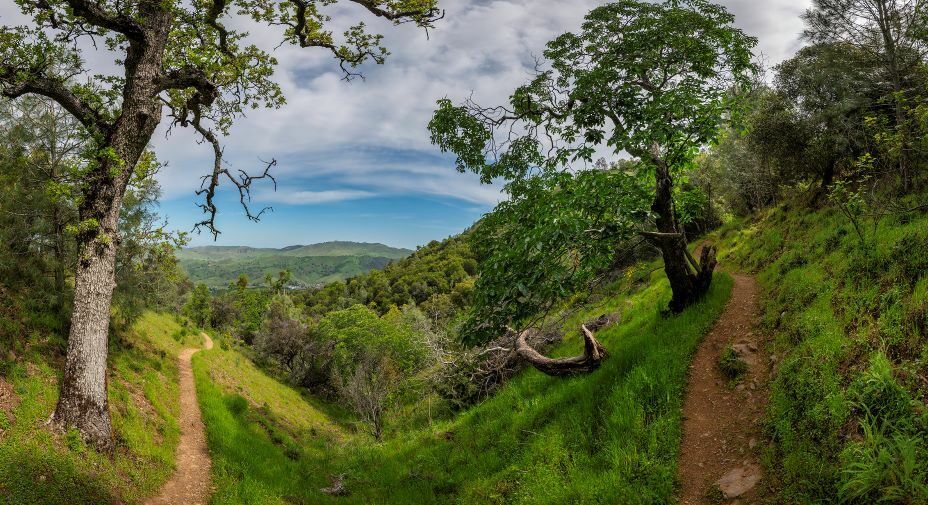
Save Mount Diablo is committed to addressing the climate catastrophe through our Climate Action Plan (CAP). We’re excited to share our progress towards the goals of the CAP.
When it comes to mitigating climate change, we like to think globally but act locally. By working to implement long-term local change, we can make the most impact.
Conservation and Restoration
Through our land acquisition, advocacy, and restoration work, we are maintaining and expanding protected land that serves as a major carbon sink and biodiversity hotspot.
The UN has identified land use and management as one of the best ways of addressing the climate crisis.
Projects such as our 10,000 trees and plants project take carbon dioxide and pollutants out of the atmosphere and make the air cleaner—helping to prevent climate change and protect the health of our local communities.
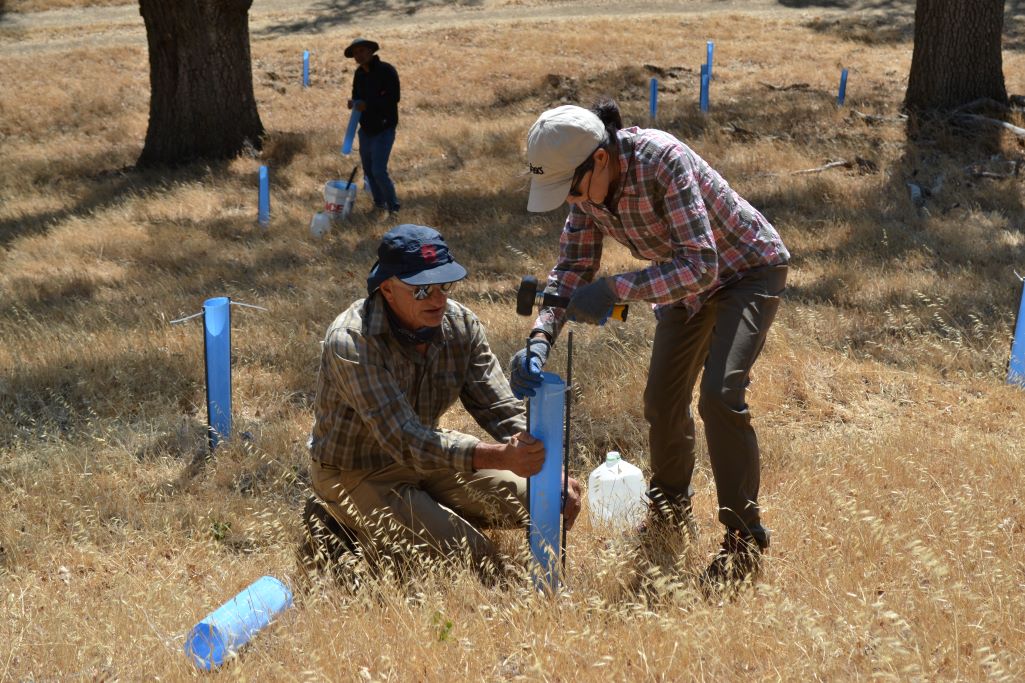
Volunteers protecting tree seedlings with tubes. The tubes protect the seedlings from being nibbled by small mammals. Photo by Haley Sutton
On suitable properties, we utilize conservation grazing methods with local ranchers.
Conservation grazing reduces the risk of wildfires and clears away invasive grasses, making room for native flora. According to Project Drawdown, sustainable grazing promotes the health of grasslands and can sequester up to 3 metric tons of carbon per acre.
As the number of fires has continued to increase around the world, fire management has become an integral part of our work. Each spring, our Diablo Restoration Team is hard at work in the field performing fire abatement tasks across our properties.
After fires occur, we document the recovery of the area and aid in the restoration. Our BioBlitz for the last two years has focused on documenting the recovery of the land in the SCU Lightning Complex fire footprint.

Fire poppy discovered during BioBlitz. Photo by Scott Hein
Land Advocacy
We have been continuing to advocate for the protection of land on and around Mount Diablo and across the land that connects Mount Diablo to the rest of its sustaining Diablo Range.
This year, we’ve had major legal victories that protect areas such as Pittsburg’s Southwest Hills from development that would further contribute to climate change.
Currently, we’re working to guide smart and climate-friendly development of more than 2,300 acres of the former Concord Naval Weapons Station.
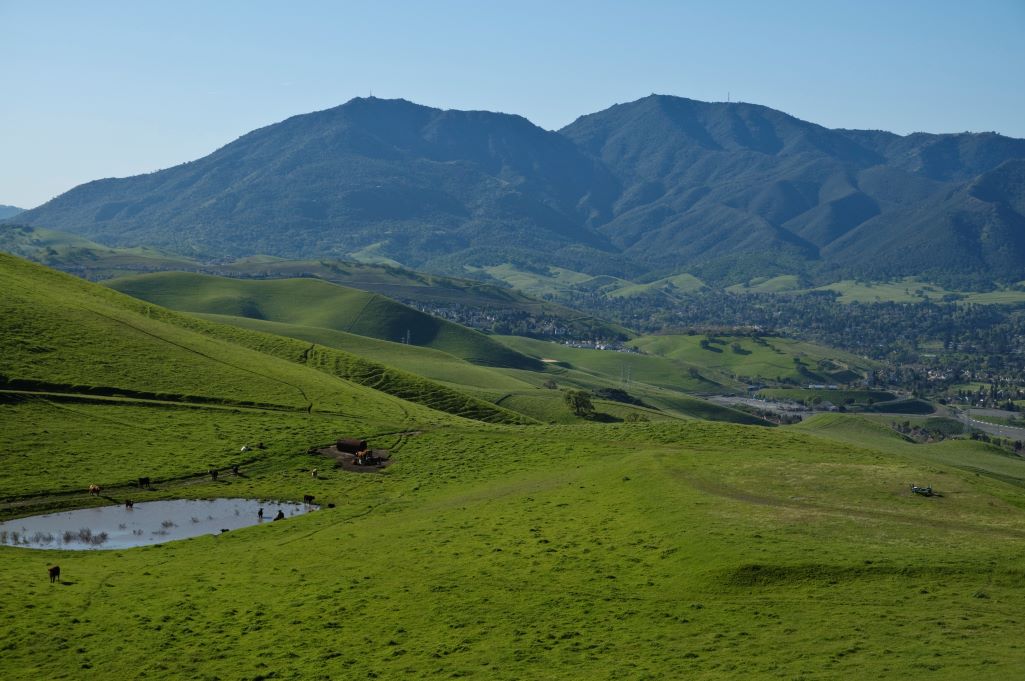
The former Concord Naval Weapons Station. Photo by Scott Hein
Greening Our Internal Operations
As advocates for a sustainable future, it is important that we serve as an example of how an organization can be run in an environmentally conscious way.
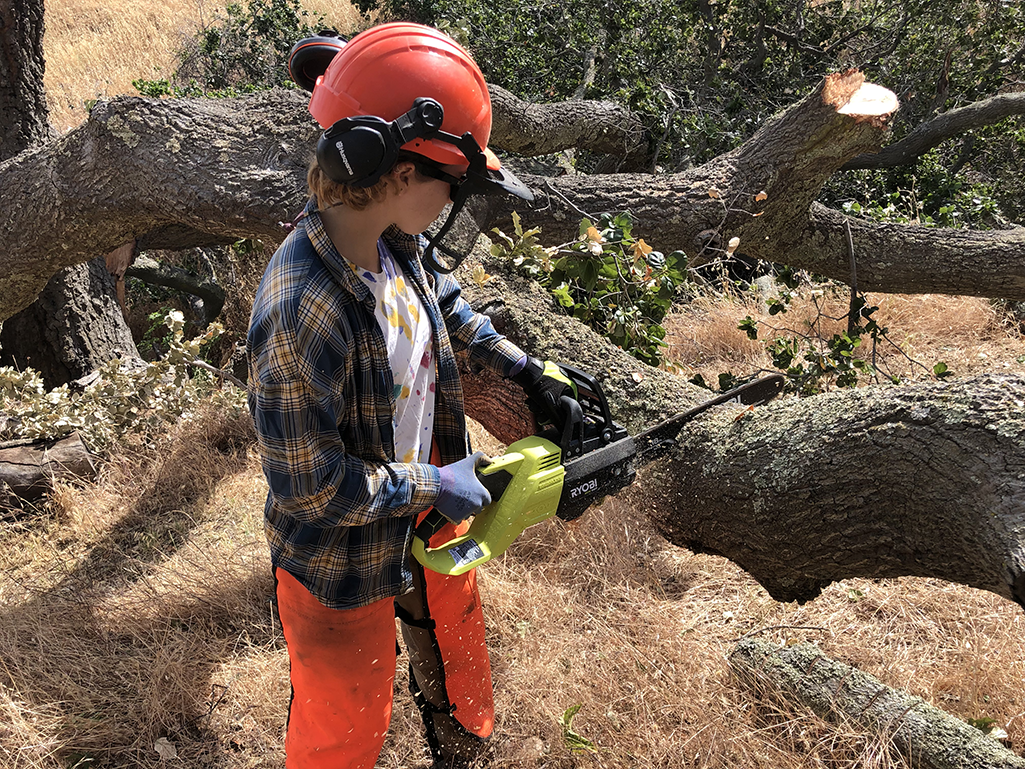
Land Stewardship Associate Haley Sutton using our new electric chainsaw in the field to work on a fallen tree. Photo by Sean Burke
To better take care of the land we own and manage, we’ve begun purchasing electric tools to aid in our land stewardship.
In the future, we hope to be able to purchase electric operations utility vehicles (OUVs) to greatly reduce the need for fossil fuels in our land stewardship work. We hope to make this happen soon with support from the community.
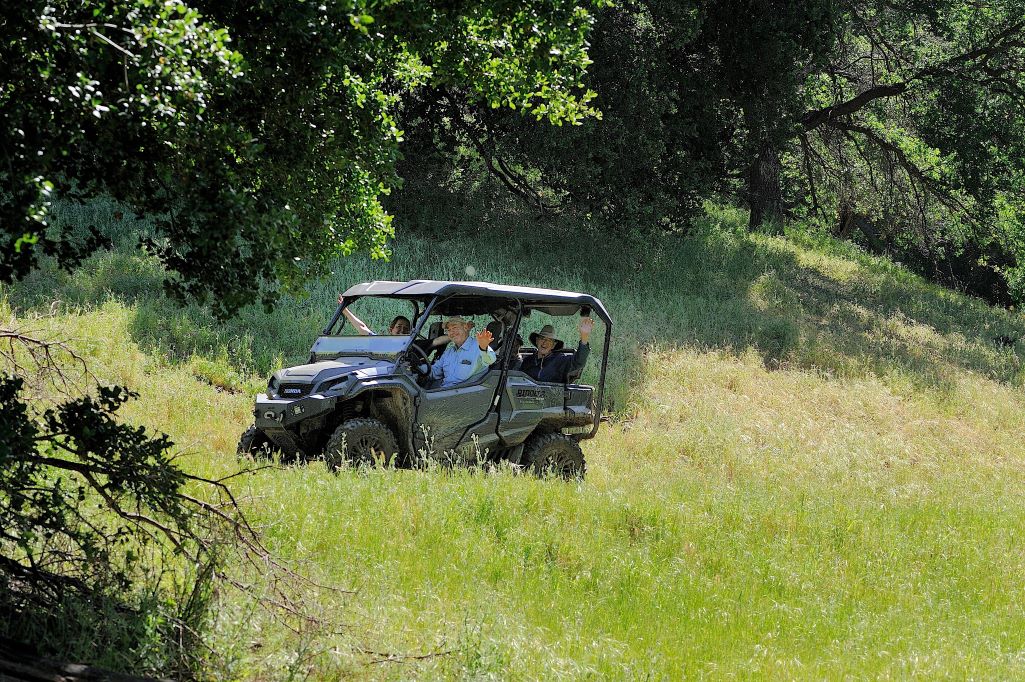
One of the goals in our Climate Action Plan is to replace our current gas-powered OUVs with electric ones. Photo by Al Johnson
Our office operations have become significantly more resource efficient in the past two years. We’re proud to say that we have transitioned to mostly paperless internal systems and have provided laptops to all employees for remote work.
Currently, most of our staff work remotely three days a week, resulting in a significant decrease in our greenhouse gas emissions.
Transportation is a major source of greenhouse gases in the US, causing about 27 percent of greenhouse gas emissions—so reducing our employees’ need to drive to and from work is key.
It is easy and realistic to transition to a more climate-friendly work environment without sacrificing efficiency or quality of work. We plan on making our operations even more climate conscious in the future.

View of Mount Diablo from the former Concord Naval Weapons Station. Photo by Scott Hein
Top photo by Stephen Joseph

